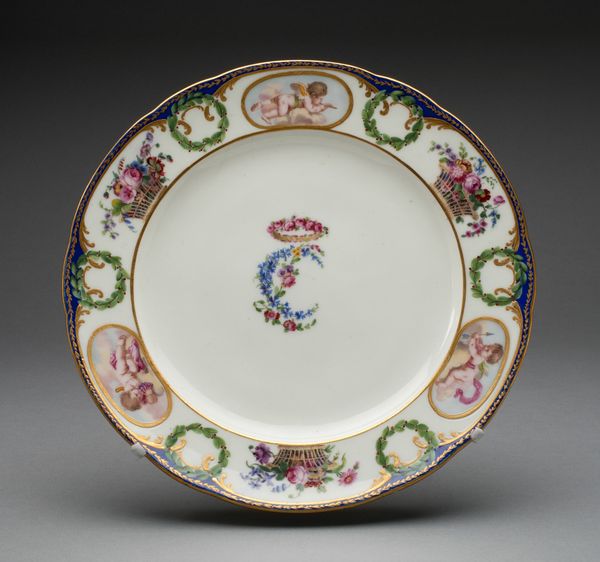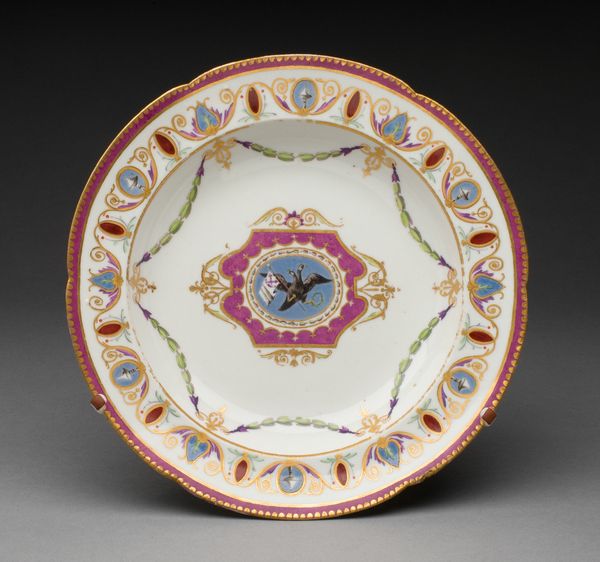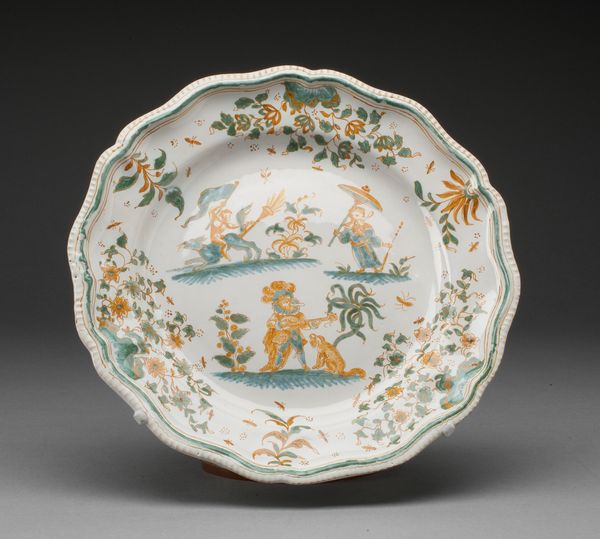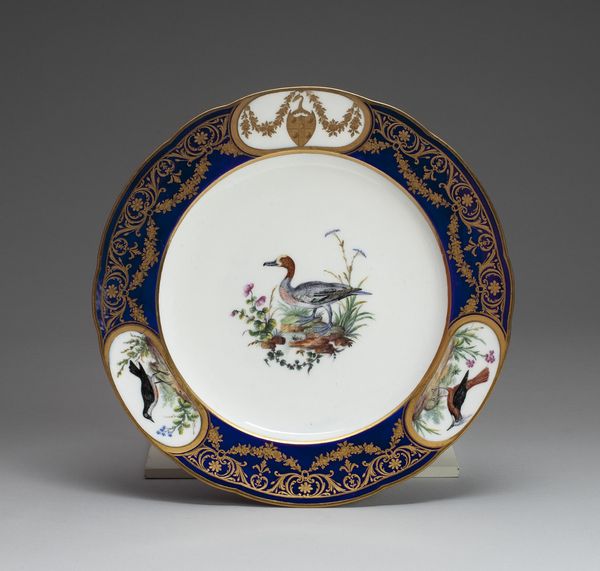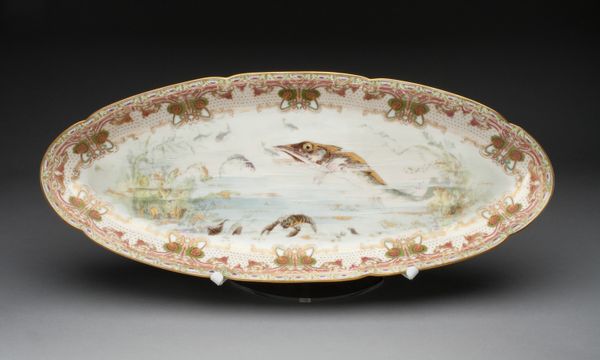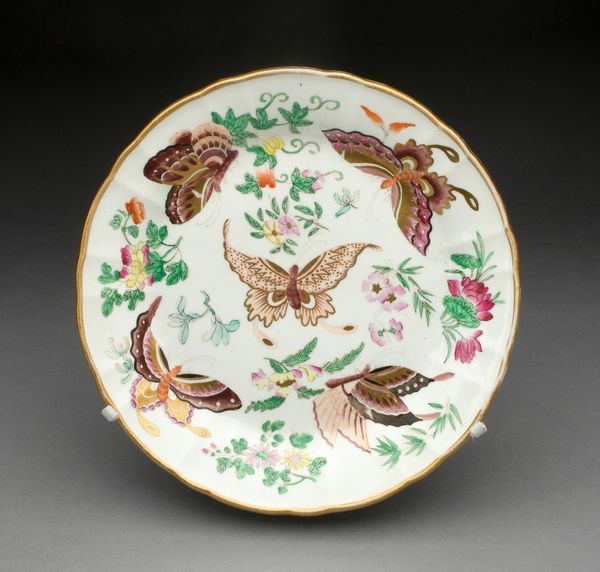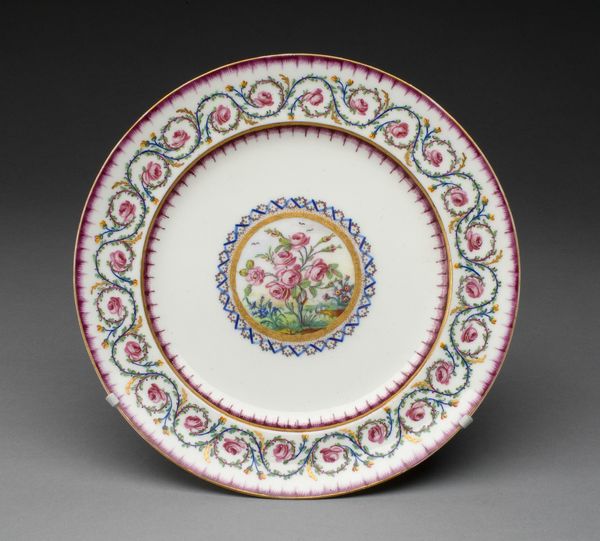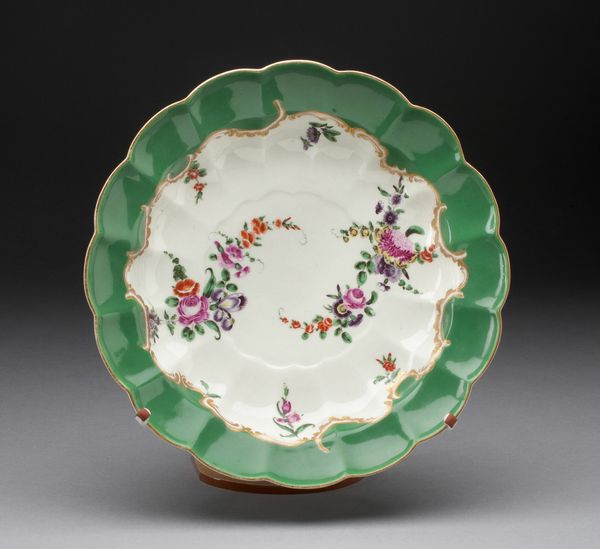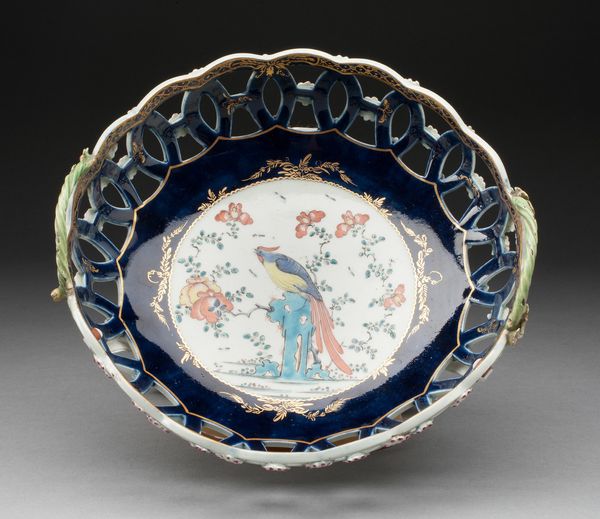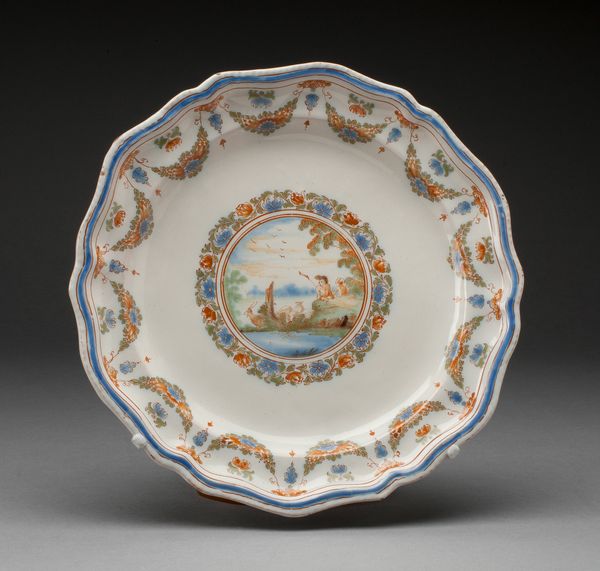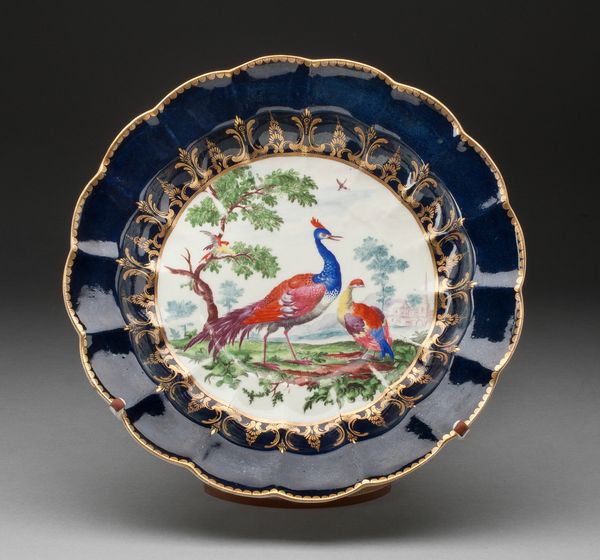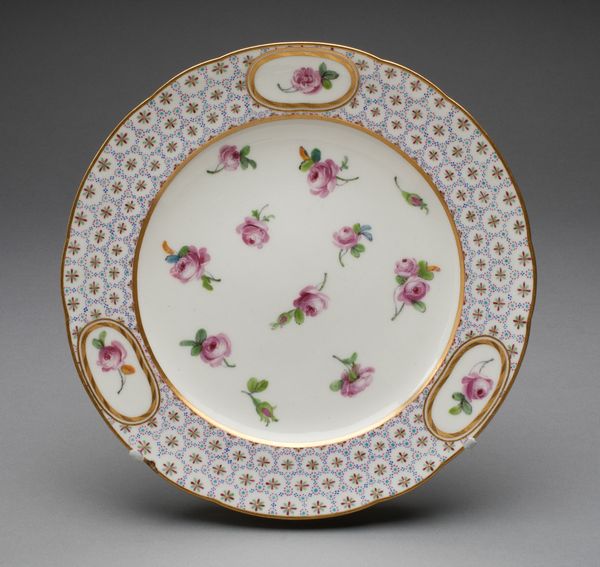
painting, ceramic, porcelain, impasto, pendant
#
art-nouveau
#
painting
#
ceramic
#
porcelain
#
impasto
#
ceramic
#
decorative-art
#
pendant
Dimensions: 2.5 × 24.8 cm (1 × 9 3/4 in.)
Copyright: Public Domain
Curator: This is a porcelain plate, crafted around 1900 by Théodore Haviland. Its Art Nouveau design incorporates painted imagery within a decorative border. Editor: Immediately striking, isn't it? There's an ethereal, almost dreamlike quality, with a central vignette of swimming fish. But also a certain rigid geometry on the plate's border gives this impression that a natural world is held under artifice. Curator: The composition adheres to classic Art Nouveau principles, employing curvilinear forms both in the painting and the intricate border design, while simultaneously reflecting back to natural forms. Notice how the border design works almost as a framing mechanism that allows for greater focus onto the work's painting, yet how, overall, there still persists a strong unity of art and design, a recurring theme with similar decorative pieces. Editor: Considering the timeframe, I'm drawn to how objects like this, luxury goods such as decorative plates, reflect shifting cultural values. Mass production techniques meet bespoke artistry on these plates to indicate changing class and cultural tastes that favored design, nature, and a modern aesthetic. How did these commodities inform the visual culture? Curator: That’s a brilliant perspective! We can analyze it as the interplay between the organic motifs—fish and water—and the constructed order within which these elements get positioned on a circular frame, suggesting the attempt of late 19th, early 20th-century aesthetic consciousness to reconcile itself to modernity. Observe how impasto enlivens the painting. Editor: True, it also has the quality of a souvenir. This porcelain plate likely adorned the homes of affluent individuals, signaling their cultural sophistication and purchasing power amid burgeoning industrialization. How did the consumption of pieces like this further influence the industrial system, the manufacturing processes? Curator: An excellent point! Perhaps through pieces like these the Haviland company could project luxury and quality by balancing machine-manufactured shapes and hand-made painted artwork on these porcelain pieces. That tension mirrors tensions within early twentieth-century visual cultures in its effort to bridge organic shapes and artificial order, doesn't it? Editor: Definitely, and thanks to our look into it today, the everyday becomes less ordinary. Curator: A deeper understanding, perhaps, of the period that formed us through artifacts and our conversation around them.
Comments
No comments
Be the first to comment and join the conversation on the ultimate creative platform.
